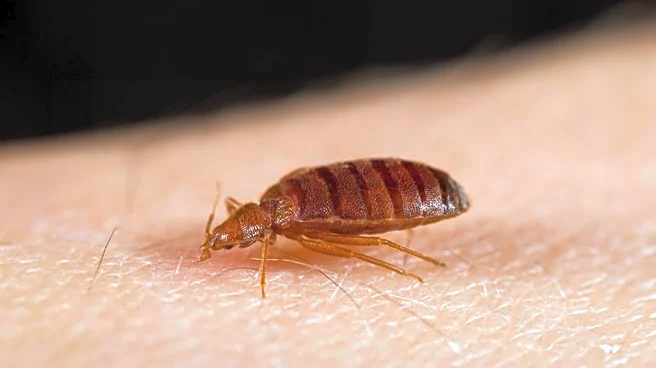What is the story about?
What's Happening?
School districts across the United States are reconsidering their policies on lice infestations in schools. Historically, children with lice were sent home until they were lice-free, but medical guidance shifted about 20 years ago to allow children to remain in school, treating lice as a nuisance rather than a public health threat. This change aimed to prioritize education over exclusion, as lice do not carry diseases and are not highly contagious unless heads are in direct contact. However, some parents and school boards are pushing back against this leniency, citing repeated infestations and the financial burden of treatments. In Hernando County, Florida, the school board has reverted to stricter policies after families reported recurring lice outbreaks due to inconsistent treatment among students.
Why It's Important?
The debate over lice policies in schools highlights the tension between public health recommendations and parental concerns. While experts argue that keeping children in school is crucial for their education, parents worry about the stigma and repeated infestations affecting their children. The financial implications are also significant, as treatments can be costly, especially if multiple family members are affected. This issue underscores the broader challenge of balancing health guidelines with community expectations and the practical realities faced by families. The outcome of these policy debates could influence how schools nationwide handle similar health-related issues, impacting both educational access and public health strategies.
What's Next?
As school districts reconsider their lice policies, they may face increased pressure from parents advocating for stricter measures. School boards will need to weigh the benefits of keeping children in school against the potential for ongoing infestations and parental dissatisfaction. This could lead to a patchwork of policies across the country, with some districts maintaining leniency while others adopt stricter guidelines. The conversation may also prompt further research into effective lice management strategies that balance educational needs with health concerns.
Beyond the Headlines
The lice policy debate touches on deeper issues of inclusion and stigma in educational settings. Excluding children due to lice can lead to social isolation and embarrassment, affecting their emotional well-being. Conversely, lenient policies may inadvertently place a burden on families who struggle with repeated infestations. This situation raises ethical questions about how schools can support both the health and dignity of students, potentially influencing broader discussions on how educational institutions address health-related challenges.
AI Generated Content
Do you find this article useful?
















